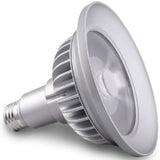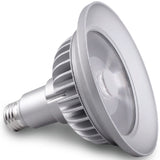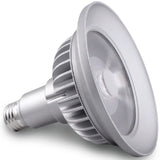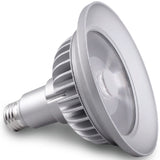Efficient Lighting Options for Outdoor Winter Use
Posted by Dave on for ProLampSales
About 8 to 15% of the electricity budget of an average household is consumed by lighting. The different types of lighting technologies that are installed, the design, and the user behavior are significant determinants to the total amount consumers can spend just on lighting for the home. With a well-designed and efficient lighting system, you can save big on household energy expenses.
You need to carefully select light bulbs when improving your outdoor lights for improved energy efficiency, and this is significant mainly in cold-winter climates. Even though compact fluorescent bulbs offer higher efficiency than that of the standard incandescent bulbs in outdoor pole and wall mount fixtures.
However, some CFLs do not perform well in cold temperatures, failing to turn on quickly enough to provide adequate illumination of an area. When the weather is cold out, you may flip a light switch and end up with a dim and slow-starting bulb. If you are unlucky, the bulb won't start at all. This is caused by the CFL lamp's ballast. The way around this is to purchase CFL bulbs with ballasts that are cold temperature rated. Search for bulbs whose minimum start temperature is below 0 degrees Fahrenheit (-17.7778 degrees Celsius). This should allow the CFL to turn on when the outside air temperature is significantly below freezing.
Besides improving on halogen lighting efficiency, LED also avoids fluorescent bulb limitations for outside security floodlights. As a matter of fact, this lighting technology works better during cold temperatures. Off-the-shelf LED light bulbs start instantly (even faster than incandescent bulbs) and perform better in low temperatures.
The only possible negative aspect occurs when the LED flood bulbs are substituted in fixtures possessing motion sensor controls. The LED bulbs wattage may not be high enough to meet the required minimum load for some older photosensors. Your fixture should be tested with cheap incandescent bulbs of low wattage. You may also acquire the latest "No Load" motion sensor fixtures for outdoor use. Many newer photocells are compatible with incandescent, halogen, CFL, and LED lamps.
Both the LEDs (Light Emitting Diode) and CFLs (Compact Fluorescent Lamps) are first-rate outdoor light sources throughout the year when used for the right applications, even though CFL lamps are now being phased out in favor of LEDs as prices have come down. Take some time and explore the expanding line of LED bulbs available on the market, which is growing by the day. If you like the CFL solution better, know that you can also get CFLs whose start temperatures go as low as negative 20 degrees Fahrenheit.
In cold temperature environments, the bottom line for CFLs is not to skimp on quality, as cheaper bulbs can struggle to turn on at all in the winter. LEDs are far superior in winter, although they have their own difficulties when the temperature warms up, as LED heat management becomes an issue.
- Posted in Fluorescent, LED
Featured Products (View All)
0 Comments




